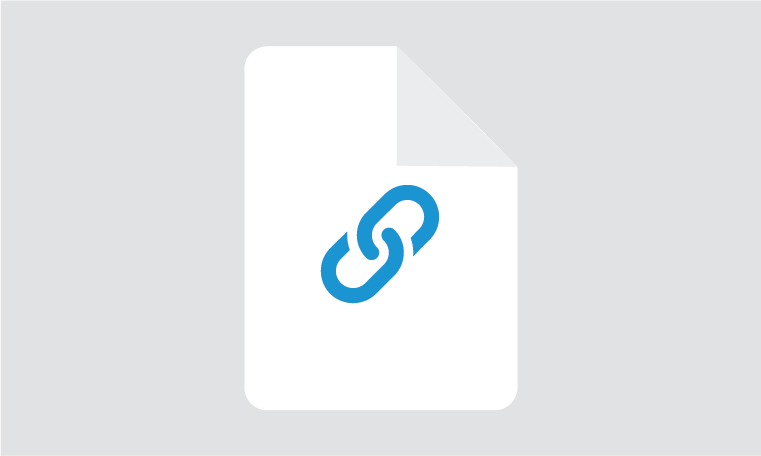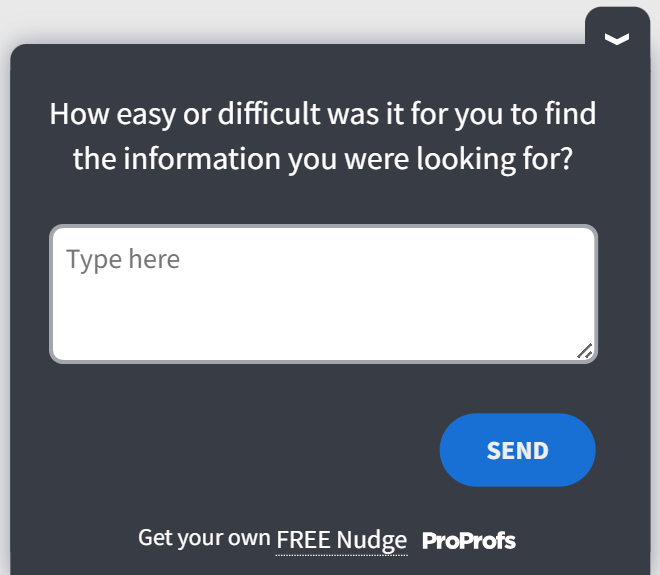Every company aims to grow and remain relevant, but how do you ensure your product continues to connect with your audience?
The answer is simple: talk to your customers.
Whether you’re perfecting a chef’s knife, designing a motorbike, or developing a SaaS platform, product feedback is a vital element. It’s about diving into real user experiences to uncover what truly matters.
Feedback goes beyond numbers; it reveals how your product fits into everyday lives, guides you in making thoughtful adjustments, and ensures your product evolves in meaningful ways.
In this guide, I’ll walk you through the process of collecting and using product feedback. You’ll learn about the different types of product feedback, methods to gather it, and practical strategies for leveraging it at each product development stage.
Plus, I’ll share practical examples and best practices to help you make the most out of customer insights.
Let’s dive in.
What is Product Feedback?
Product feedback refers to opinions and suggestions about your product, both positive and negative, given by the end users.
Product feedback is mostly about the experience and satisfaction of people who use a product and focuses on specific aspects, such as usability, new features, product lines, upgrades, and more. Gathering this helps product teams make necessary product improvements.
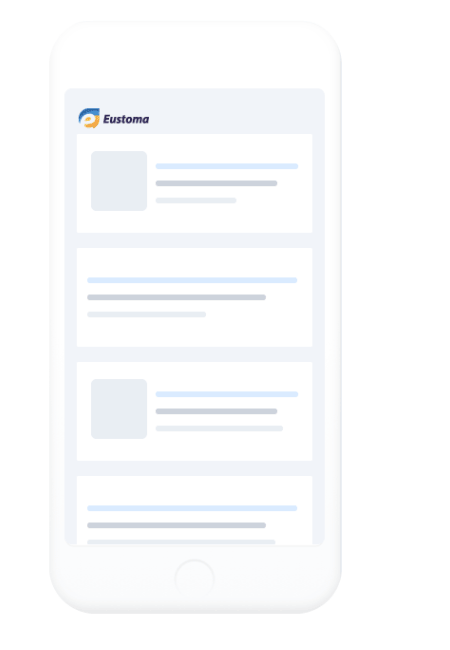
You can collect feedback for a product in multiple ways, including:
- Interviews
- Customer support tickets
- Online reviews
- In-app surveys using product feedback software
We’ll discuss these and more methods of collecting product feedback later in the article.
What is Customer Feedback?
Customer feedback is all about how users feel about their overall experience with your brand. It’s not just limited to products but includes every interaction they have with your company—whether that’s navigating your website, chatting with support, or even seeing your brand on social media.
While product feedback zeroes in on specific features, customer feedback gives you the bigger picture. It helps you understand the full customer journey and spot areas where things could be better. By listening to this feedback, you can make improvements that resonate with your customers, strengthening their trust and loyalty along the way.
Types of Product Feedback
There are multiple types of product feedback that you can collect based on what information you are looking for:
Let’s take a look at the different types:
Transactional Feedback
Transactional feedback collects information about the user’s interaction with the product at different touchpoints.
Transactional feedback is extremely specific, which helps brands zero in on each touchpoint and improve them for a better user experience.
To give you an example of transactional feedback, a restaurant or a food delivery service app instantly pushes you a feedback notification once you have either dined or have received your food delivery.
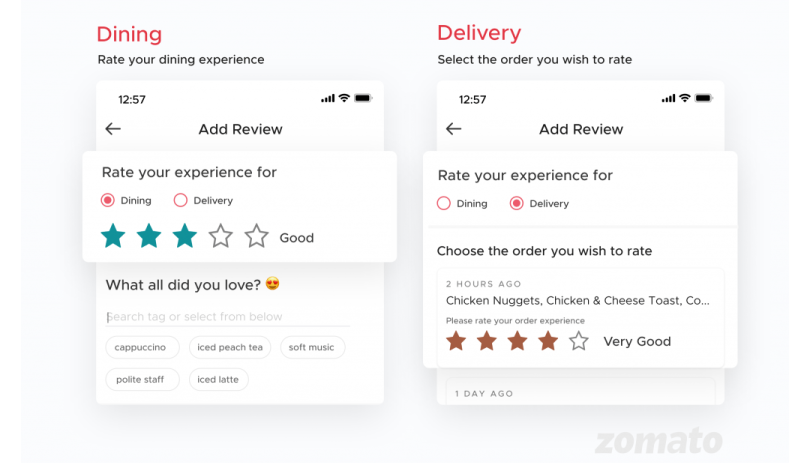
The feedback aims to gauge the experience of the service and food quality related to that order specifically.
These types of feedback are mostly rating-based, where the user can rate the products and services and provide detailed insights about what they liked and disliked.
Free Trial Feedback
As the name suggests, you take free trial feedback at the end of a product’s free trial.
To give you a perspective, if a CRM software user doesn’t purchase the product after the free trial, the product feedback can help you understand the exact reason behind their decision.
Brands can also reach out to users to learn more about their challenges and difficulties during their free trial. You can transfer this feedback to the product teams to eliminate recurring issues that drive potential customers away. Here’s a template you can use to capture free-trial feedback:
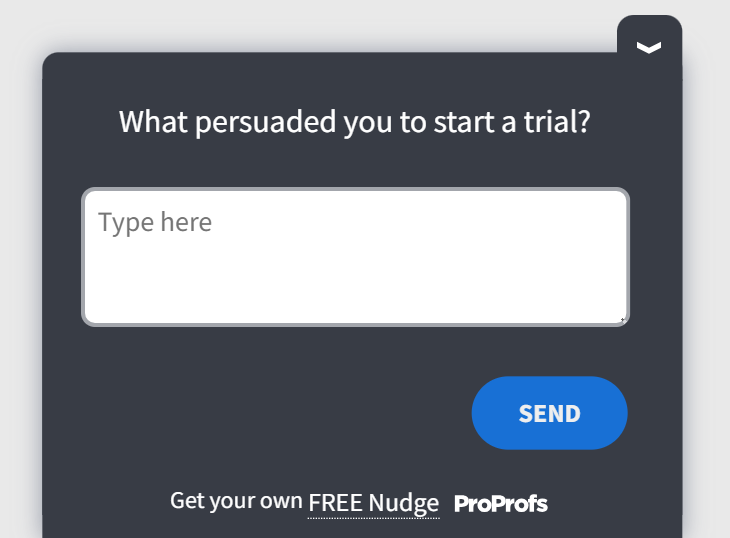
Onboarding Feedback
Onboarding feedback lets companies uncover insights about product adoption and the onboarding process.
These insights can help create a better onboarding experience and more customer-centric products.
Onboarding feedback is also beneficial for the users to improve product usage and familiarize themselves with key features and settings.
An onboarding survey can be quite diverse. You can deploy a rating scale to check how your users perceive your onboarding. Or, you can even deploy an NPS survey to see if your process was a hit based on the likelihood of your users recommending you to others. In fact, you can use this free template to measure the success of the onboarding process:
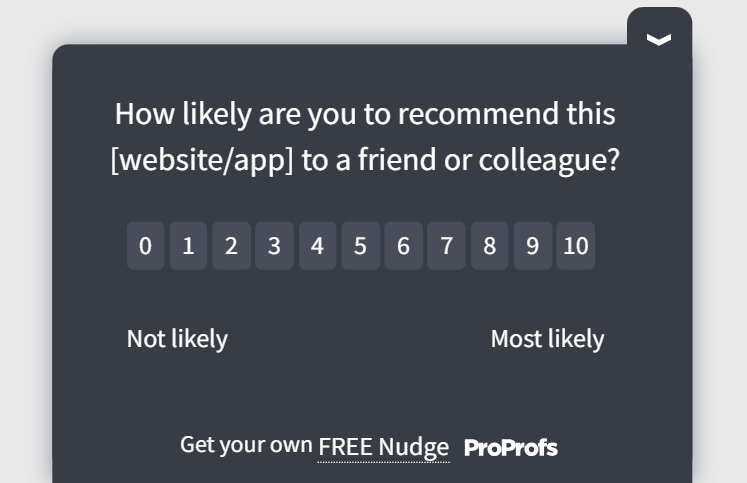
Cancellation Feedback
The insights you collect from a churned customer are called product cancellation feedback. The product survey is shown to the user when they cancel the subscription or service with you.
The idea here is to know the reason behind the user’s subscription cancellation and what you can do to retain them. You can add a pop-up survey to your cancellation page using a feedback tool like Qualaroo to instantly capture contextual feedback from your abandoning users.
Users are likely to respond right when they take action and when the feedback fits the context of the situation perfectly. Here, you can use a product feedback platform to embed online pop-up surveys on your cancellation page to instantly capture feedback from your users.
You can also send email and SMS surveys to the users who have canceled their subscriptions at a later date.
When it comes to the questions, start with a restricted question and use branching to ask an open-ended question to contextualize your feedback. How about using a cancellation survey template?
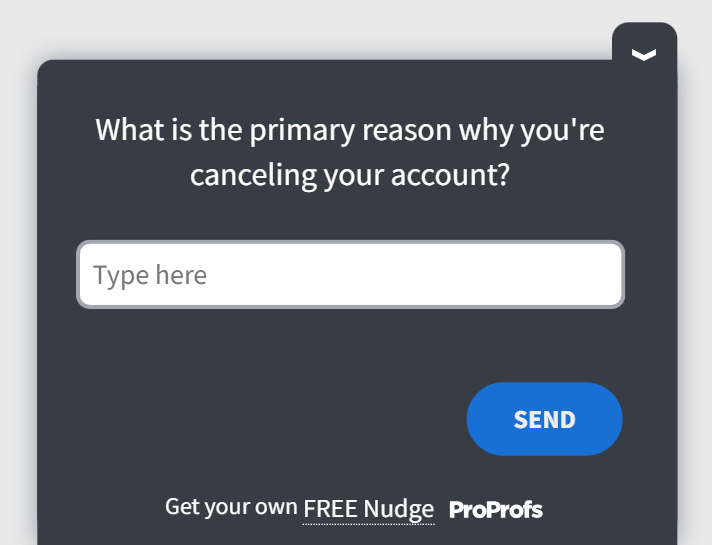
Post Update Feedback
Regular product updates are necessary to weed out issues and add new features to the product. But how would you know how users perceive your product updates?
Product feedback helps to gauge the acceptance and efficacy of new features and updates you introduce.
For your post-update feedback, wait for at least 1-2 weeks before deploying your in-app product feedback surveys so that your users get enough time to get accustomed to the new updates and form an opinion about them.
You can easily deploy a CSAT survey here to check how satisfied your users are with the new updates and collect feedback on the following:
- The performance of the new updates
- The concept and the idea behind the new update
- Pricing and packages
- Suggestions for feature improvements
With that, we now know the different types of product feedback that you can deploy. Now let’s look at the best practices for collecting product feedback.
Read More: How to Collect and Benefit From In-App Feedback
Top Methods of Collecting Product Feedback
Here are some of the prevalent methods to capture product feedback. But before that, here’s a skimmable table for you to skip the details in depth:
| Method | Setup Time | Cost | When to Use |
|---|---|---|---|
| In-app/Website Surveys | 1 day | $0–$200/month | Capture feedback in real time |
| Interviews/Focus Groups | 1–2 weeks | $500–$2,000 | Deep qualitative insights |
| Usability Testing | 1 week | $50–$100 per tester | Spot UX friction |
| Social Media/Reviews | 1 day | Free–$100/month | Track unprompted sentiment |
| Analytics | 1–2 days | Free–$500/month | Understand behavior trends |
| Support Interactions | Ongoing | Free (with support ops) | Reveal common pain points |
1. Surveys, Questionnaires, and In-App Feedback Tools
Combining traditional survey methods with modern in-app feedback tools offers a comprehensive approach to understanding user experience and satisfaction. This hybrid method allows for the collection of both in-depth qualitative insights and quantifiable data across various touch points within the user journey.
In-App Surveys:
In-app surveys are integrated directly into your mobile application, enabling you to capture feedback at the moment of user interaction.
These surveys can be triggered by specific user actions or behaviors, such as completing a task or using a feature for the first time. In-app surveys can be set up in a single day, and you’ll start seeing insights within a week. Most tools cost $0–$200/month, depending on features. This makes them a budget-friendly option for lean teams.
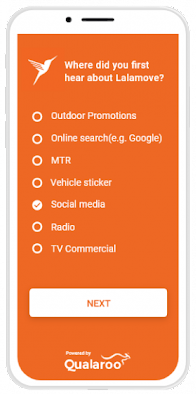
For example, after a user finishes a transaction within your app, a short survey might pop up asking them to rate their experience and provide any comments on how it could be improved.
You can watch this quick video to collect your mobile-app feedback effectively:
Website Surveys:
Similarly, surveys on your website can be strategically placed to gather feedback from visitors. Pop-up surveys can appear after a visitor spends a certain amount of time on a page or is about to exit, asking about their experience or why they are leaving without completing a purchase.
This method is particularly useful for understanding user behavior and obstacles in the conversion funnel.
In-Product Feedback:
Within the product itself, feedback prompts can be contextually integrated into the user interface, asking for feedback on specific features or during particular stages of the user journey.
For example, a feedback widget might always be visible as an icon, allowing users to provide feedback at any point, or a prompt might appear after a new feature is used for the first time, asking for the user’s impressions.
Suggested Read: 10 Best Website Feedback Widgets to Collect Actionable Insights
2. User Interviews and Focus Groups
User interviews and focus groups involve direct interaction with a select group of users to dive deep into their experiences and opinions.
This can be done virtually or in person. These sessions usually take 1–2 weeks to plan and analyze. Expect a budget of $500–$2,000 per session, depending on participant incentives and facilitation. For small teams, even a single well-run session can yield deep insights that surveys might miss.
For example, you might conduct a focus group with users who have recently tried a new feature to understand its impact and usability. These discussions can reveal in-depth insights and nuances that surveys might miss, providing a richer understanding of user needs and preferences.
3. Usability Testing
Usability testing involves observing users as they interact with your product in a controlled environment. This method helps identify usability issues and areas of confusion.
For instance, you might ask users to complete specific tasks within your app while observing their behavior and noting any difficulties they encounter. This hands-on approach provides direct evidence of how users interact with your product and what changes could enhance their experience.
Usability tests typically take one week to plan and run, with 2–3 days to analyze findings. The cost per tester ranges from $50–$100. Remote testing platforms make this method accessible even for small budgets. Here’s a quick video for you to learn more about usability testing.
Here’s something useful: 12 Best Usability Testing Tools for an Effective UX Strategy
4. Social Media and Online Reviews
Social media platforms and online review sites offer a wealth of unsolicited feedback. Monitoring these channels can provide insights into how your product is perceived in the market.
Social listening is an ongoing activity. You can set up monitoring tools in a day and start gathering insights immediately. While manual tracking is free, tools like Mention or Hootsuite range from free to $100/month.
For example, you might analyze tweets mentioning your product to gauge customer sentiment or respond to reviews on platforms like Google or Yelp to address concerns and gather feedback.
This method requires active listening and engagement but can yield valuable insights from a broad audience.
5. Analytics and Usage Data
Analyzing how users interact with your product can provide indirect feedback on its strengths and weaknesses. Tools like Google Analytics or in-app analytics can track user behavior, such as which features are most used, where users drop off, and how they navigate through your product.
Most analytics setups take 1–2 days, with ongoing results available in real time. Google Analytics is free, while advanced in-app analytics tools can cost up to $500/month. This makes it a scalable option whether you’re a startup or an enterprise.
For example, a high drop-off rate on a particular page might indicate usability issues or unmet user needs, prompting further investigation.
6. Customer Support Interactions
Customer support interactions are a rich source of feedback, as they often involve users reaching out with issues or questions.
Analyzing support tickets, chat logs, and call recordings can reveal common pain points and areas for improvement. For instance, if many users contact support about difficulty finding a certain feature, this might indicate a need for better UI design or user education.
In implementing these methods, it’s crucial to ensure that the process of giving feedback is easy and convenient for users and that the feedback collected is systematically analyzed and acted upon.
This can involve integrating feedback mechanisms naturally into the user experience, providing incentives for feedback, and establishing a process for reviewing and prioritizing feedback within your product development cycle.
7. Other Methods of Collecting Product Feedback
Beyond the usual methods, there are several other creative ways to gather valuable product feedback:
- Beta Testing Programs: Engage a select group of users to test new features or versions of your product before the official launch. Their feedback can help you identify bugs, usability issues, and areas for enhancement.
- Customer Advisory Boards: Assemble a panel of your most engaged customers who can offer ongoing feedback and provide insights on future product directions. These boards can offer a deeper, more strategic perspective.
- In-Person Events and Workshops: Host events, workshops, or meetups to connect directly with your customers. These settings allow for face-to-face discussions and the opportunity to observe user interactions with your product.
- Interactive Product Demos: Conduct live demos where users can provide immediate feedback. This real-time interaction helps you understand user expectations and clarify any misconceptions.
- Crowdsourcing Ideas: Use platforms where customers can submit, vote, and comment on new product ideas. This not only gathers feedback but also fosters a sense of community and ownership among your users.
- Gamified Feedback Collection: Incorporate gamification elements into your feedback process, like offering rewards or badges for users who participate in surveys or provide insightful feedback.
- Dedicated Feedback Portals: Create a dedicated space on your website or app where users can submit suggestions, report issues, or share their thoughts at any time, separate from the regular in-app prompts.
Suggested Read: Best Product Feedback Tools to Improve Your Products
FREE. All Features. FOREVER!
Try our Forever FREE account with all premium features!
How to Collect and Implement Product Feedback: A Step-by-Step Guide
Step 1: Define Your Goals
Gathering and acting on product feedback doesn’t have to be complicated. Here’s a simple guide to help you through the process:
Step 2: Choose the Right Methods
Before you start collecting feedback, it’s crucial to identify what you want to achieve. Are you trying to improve a specific feature, enhance user experience, or test a new idea? Clear goals help you ask the right questions and focus on actionable insights.
Select the most suitable feedback methods based on your goals. For example:
- Surveys and Questionnaires: Great for gathering quantitative data on specific product aspects. Check out this quick video to learn how to create in-context surveys.
- In-App Feedback: Useful for collecting real-time feedback directly from users while they’re using the product.
- Interviews and Focus Groups: Ideal for in-depth qualitative insights. Pick the methods that align best with your objectives and the stage of your product development.
Step 3: Design Your Feedback Collection Tools
Craft your surveys, questionnaires, or interview guides carefully. Keep questions concise, relevant, and focused on your goals. Mix different types of questions like multiple-choice, Likert scales, and open-ended questions to gather both quantitative and qualitative data.
Suggested Read: How to Write Good Customer Survey Questions
Step 4: Collect Feedback
Deploy your feedback tools at strategic points in the user journey:
- During Onboarding: To understand how new users experience your product.
- After Feature Use: To get immediate feedback on new or updated features.
- Post-Purchase or Post-Trial: To gauge overall satisfaction and identify areas for improvement. Ensure that the feedback process is easy and non-intrusive to encourage participation.
Step 5: Analyze the Feedback
Once you’ve collected the feedback, it’s time to dive into the data. Look for patterns and trends in the responses. What are the common pain points? Are there features users love or ones they find confusing? Use both qualitative and quantitative data to get a comprehensive understanding.
Step 6: Prioritize Actions
You likely won’t be able to address every piece of feedback at once. Prioritize based on factors like:
- Impact on User Experience: Focus on changes that will significantly improve user satisfaction.
- Feasibility: Consider the resources and time required to implement changes.
- Business Goals: Align feedback implementation with your overall product and business strategy. Create a roadmap for which feedback to act on immediately and what can be scheduled for future updates.
Step 7: Implement Changes
Start making the changes based on the prioritized feedback. It could involve tweaking existing features, adding new functionalities, or improving the user interface. Make sure to test these changes internally before rolling them out to ensure they enhance the product as intended.
Step 8: Communicate With Your Users
Keep your users in the loop about how their feedback is being used. Share updates on changes or new features that were influenced by user feedback. This builds trust and shows that you value their input, encouraging them to continue providing feedback.
Step 9: Monitor the Impact
After implementing changes, monitor how they affect the user experience and overall product performance. Use analytics, follow-up surveys, and customer support interactions to see if the changes have had the desired impact.
Step 10: Iterate and Repeat
Product development is an ongoing process. Continue collecting feedback, analyzing it, and making iterative improvements. Use each cycle as an opportunity to refine your product and better meet your users’ needs.
How to Prioritize Product Feedback
Collecting feedback is easy — deciding what to fix first is where most teams hit roadblocks. Here’s a simple playbook you can follow right after analyzing your feedback:
Step 1: Gather All Feedback in One Place: Create a single backlog (spreadsheet, Trello board, or your product management tool). Each item should include the issue, source, and number of users affected.
Step 2: Apply the Impact vs. Effort Matrix
- List each feedback item.
- Ask: How much impact will this have on users? (High/Medium/Low)
- Ask: How much effort will it take to implement? (High/Low)
- Plot them on a 2×2 grid.
Action: Do Quick Wins first, schedule Strategic Projects, and ignore Low Impact / High Effort items.
Step 3: Score with RICE for Tougher Calls: When you have competing high-priority items, use the RICE formula:
- Reach: How many users will it help each month?
- Impact: Estimate on a 1–3 scale (minimal, moderate, massive).
- Confidence: How certain are you? (50%, 80%, 100%).
- Effort: How many person-weeks will it take?
Action: Calculate (Reach × Impact × Confidence) ÷ Effort. Tackle the highest scores first.
Step 4: Assign Timelines
- Quick Wins: Fix within 2 weeks.
- Strategic Projects: Roadmap into 1–3 months.
- Low Priority: Review again in the next quarter.
Step 5: Communicate: Share your prioritization plan with your team so everyone knows why certain feedback is being actioned first. This keeps alignment and avoids debates later.
Feedback Strategies for Lean Teams
Let’s face it: not every team has the luxury of big budgets or dedicated research departments. If you’re running lean, you need smart, scrappy ways to collect and act on feedback without draining time or money. Here’s how:
1. Start Small, Scale Later: You don’t need hundreds of responses right away. Even 10–15 well-chosen user interviews can reveal patterns. Use quick in-app surveys to supplement and build your dataset over time.
2. Automate Where Possible: Instead of manually emailing users, deploy a tool like Qualaroo to trigger contextual surveys inside your product. It saves hours and captures feedback at the exact moment of use.
3. Prioritize Ruthlessly: When resources are tight, lean on the Impact vs. Effort Matrix. Focus on high-impact, low-effort fixes first (like clarifying copy or tweaking a workflow) before tackling big rebuilds.
4. Use free & low-cost tools
- Qualaroo & ProProfs Survey Maker (in-app feedback with targeting & AI analysis) – Free plan available, paid plans from ~$100/month
- Google Analytics – Free for most teams
5. Share Feedback Openly: If you’re a team of 2–10 people, don’t silo insights. Keep a shared board or Slack channel so everyone sees user pain points and can align on next steps.
Outcome: Instead of being paralyzed by a lack of resources, small teams can still build feedback-driven products — just faster, leaner, and without burning out.
Effective Feedback Strategies for Each Product Development Stage
Collecting feedback throughout the product development process is key, but it should evolve as you move through each stage. Here’s how you can effectively tailor your feedback strategies:
Pre-Development Stage or Planning Stage
At this early stage, it’s all about understanding your users and making sure your idea has potential.
- Concept Testing: Share your initial ideas or prototypes with potential users and get their reactions. Ask open-ended questions to see if the concept resonates and fits into their lives. Early feedback like this can help you catch major issues or refine your concept before you dive into development.
- Competitive Analysis Surveys: Reach out to people who are familiar with existing products in your market. Ask what they like, dislike, and wish they could change. Learning what matters to them gives you insights into how you can stand out and fill any gaps.
- Focus Groups: Gather small groups of target customers for in-depth discussions. These sessions can uncover valuable insights and nuances that might not come through in surveys, helping you get a deeper understanding of user needs and preferences.
Development Stage
While you’re building the product, it’s crucial to ensure it’s user-friendly and aligned with what users expect.
- Usability Testing: Watch users interact with prototypes or early versions of your product. Notice where they get stuck or seem confused. Observing their behavior can highlight friction points that need addressing, and it often uncovers issues you wouldn’t have anticipated.
- A/B Testing: Test different versions of features or design elements to see which ones users prefer. This approach helps you make informed decisions based on real user behavior rather than just guessing what might work best.
- Beta Testing Programs: Offer a beta version to a select group of users and encourage them to use it in their daily routines. Collect feedback on how it’s functioning and what they think overall. This is a great way to catch any bugs or usability issues before rolling out the full release.
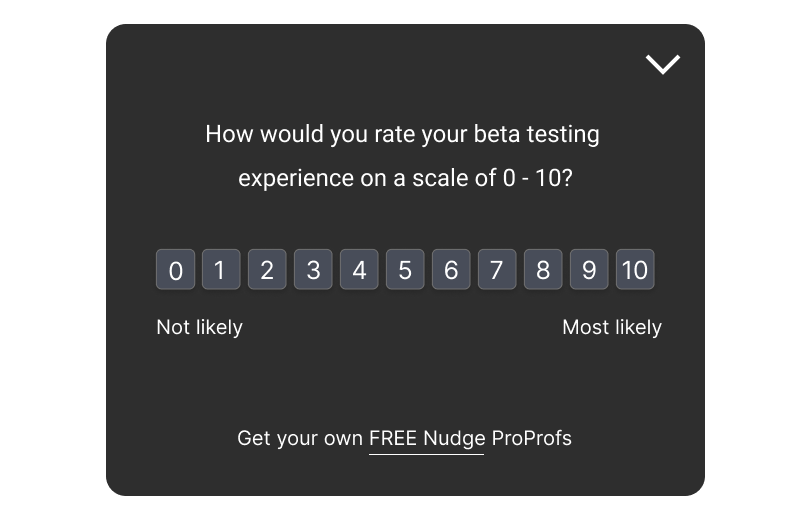
After Product Launch
Once your product is out in the world, it’s time to see how it’s being received and find out where you can make it even better.
- In-App Surveys: Implement short surveys within the product triggered by specific actions. For instance, after a user completes a task, you could ask about their experience. Getting feedback in the moment gives you a clear picture of what’s working and where users might be hitting snags.
- Customer Satisfaction (CSAT) Surveys: Check in regularly with users to measure their satisfaction with key parts of the product. This helps you gauge overall sentiment and identify areas that could use some fine-tuning.
- Net Promoter Score (NPS): Ask users how likely they are to recommend your product to others. Follow up to understand the reasons behind their rating. It’s a great way to identify your biggest fans and those who might need a bit more attention.
- Post-Update Surveys: Give users a week or two to try out the new features before asking for their opinions. Focus on questions like whether the update met their expectations and if there are any areas that could be improved.
- Feedback Widgets: Add a feedback widget near the new features, making it easy for users to share their thoughts or report issues. It’s a simple way for them to give feedback right when they’re using the feature.
- Usage Analytics: Keep an eye on how users are interacting with the new features. Are they using them as you expected? Are there any points where users seem to drop off or struggle? Analyzing these patterns helps you understand what’s working and what might need tweaking.
FREE. All Features. FOREVER!
Try our Forever FREE account with all premium features!
Product Feedback Questions for Each Stage of the Cycle
The right product survey questions will fetch the correct information and prevent you from making mistakes that may deteriorate the product experience instead of enhancing it.
That’s why we have compiled a list of various questions you can use to collect product feedback for different scenarios that may arise in your product development and growth cycle.
Pre-Development Stage or Planning Stage
Scenario 1. Exploring product opportunities
- Which feature do you want us to build next? (Single answer type)
- Would you purchase the product at [price]? (Y/N)
- Have you seen any product with [feature name]? (Y/N)
- Would you purchase this product if it were available today? (Y/N)
- What problem would you like to solve with our product? (Free-text)
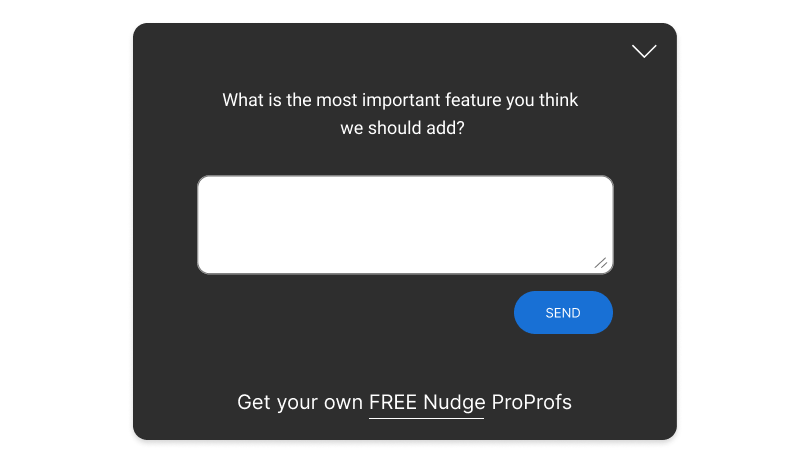
Scenario 2. Competitive analysis
- How long have you had the product?
- How often do you use the product?
- Rate the factors that affect your buying decision for [product] (Matrix match)
- How satisfied are you with the product? (Likert Scale)
- According to you, which brand best fits each of the following traits? (Matrix match)
- According to you, in which area is this product/service lacking the most? Specify below. (Free text)
Development Stage
Scenario 3. Testing usability
- What was your initial impression of the product? (Free-text, Likert Scale)
- What function do you think this product does? (Free text)
- What problems did you encounter while using our [product]? (Free text)
- What feature did you expect but not find? (Free text)
- How easy was it to navigate the product? (Likert scale)
- What are the things that you liked the most about the product? (Multiple choice)
- What grabbed your attention? (Free text)
- What words or sentences can you recall?
- What are the main elements you can recall?
- How can we make [this product] easier to use? (Free text)
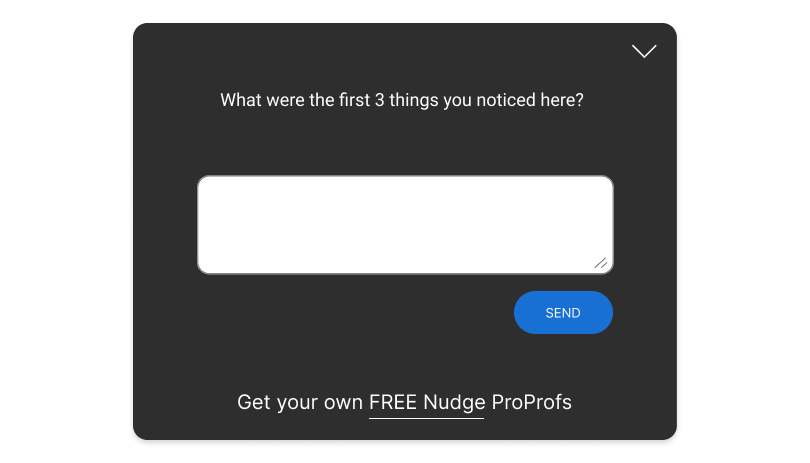
After Product Launch
Scenario 4. Understanding product experience
- Please rate the following aspects of the product as per your experience: (Matrix question)
- Please rate your overall experience with the product. (Rating scale 1-5)
- What changed for you after you started using our product? (Free-text)
- What convinced you to buy the product? (Free-text)
- Which of the following words would you use to describe our product? (Multiple choice)
- How satisfied are you with the product? (Likert scale or rating scale)
- What difficulty did you face while using the product? Please specify. (Free-text)
- How can we make the product better for you? (Free-text)
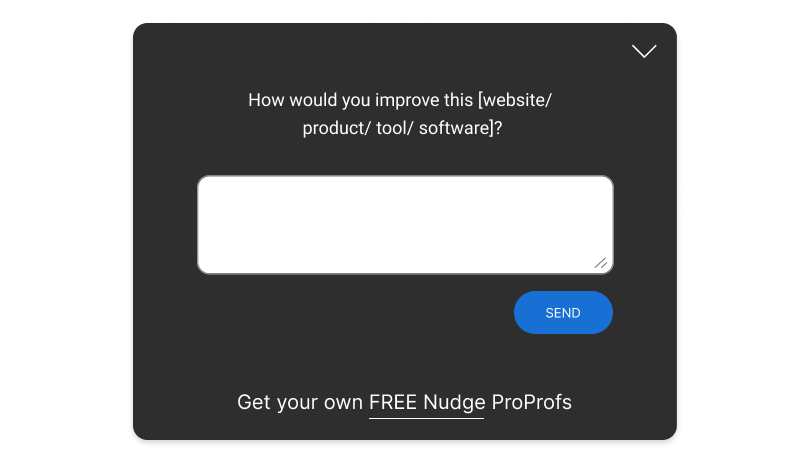
Scenario 5. Gauge customer satisfaction (CSAT survey)
- Overall, how satisfied were you with our [product name]? (Likert scale or rating scale 1-5)
- If the response is negative (1-3): Sorry to hear that! How could we improve?
- If the response is positive (4-5): What do you love about [product name]?
- Do you feel our [product or service] is worth the cost? (Y/N)
- What should we do to ‘WOW’ you? (Free text)
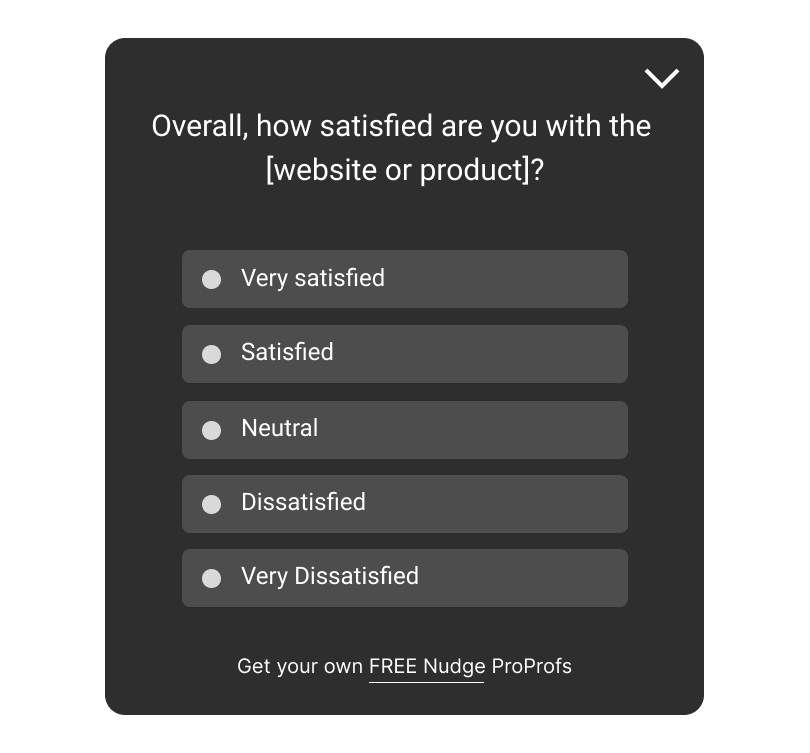
Scenario 6. Likelihood of recommending the product (NPS survey)
- What is the likelihood that you would recommend [company or product or app] to a friend or colleague? (NPS scale)
- If the answer is (0-8): What is the reason for your answer? (Free text)
- If the answer is (9-10): What are the aspects that you like the most? (Free text)
- How likely are you to buy again from us? (Likert scale)
Scenario 7. Identifying product Issues
- What’s the one thing that nearly stopped you from buying from us today? (Free-text)
- Did you find what you were looking for? (Y/N)
- What important features are we missing? (Free-text)
- What is your greatest concern about [product]? (Free-text)
- Have you started using other similar products? If yes, what made you choose that product? (Free-text)
- What are the things that you want to improve in the product? (Free-text)
- What are your main concerns or questions about [product or service]? (Free-text)
- How can we improve our product? (Free-text)
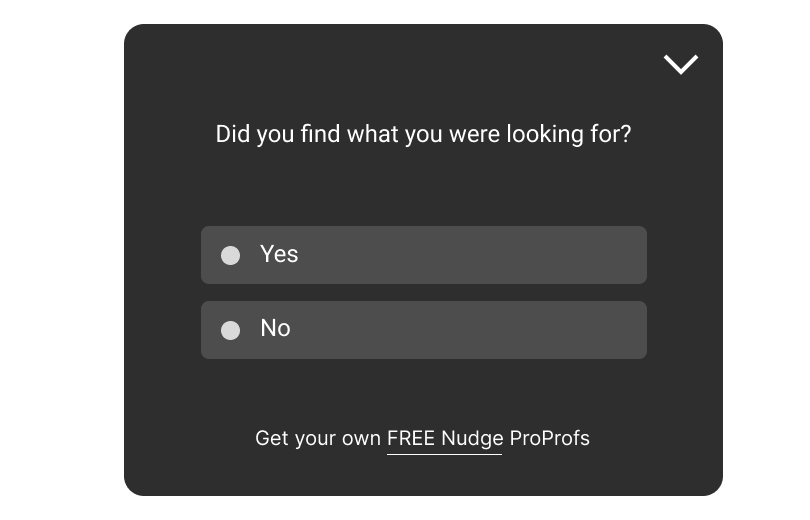
Scenario 8. Releasing new updates
- How would you rate this new feature? (Rating scale 1-5)
- How likely are you to recommend [product name] to your friends and colleagues after implementing [feature name]? (NPS Scale)
- Please let us know how we can further improve this feature. (Free-text)
- Have you used our [product or service] before? (Y/N)
5 Best Practices for Incorporating Customer Feedback Into Product Cycles
1. Estimate the Required Sample Size to Ensure the Data Is Reliable
One of the most important things to do while collecting customer feedback is to estimate the sample size for your survey responses.
A large sample size provides two benefits in your survey campaigns:
- Helps to establish the statistical significance. For example, a 95% statistical significance means the probability of getting wrong results is 5 out of 100.
- Increases the reliability of the data.
- Provides you with enough data points to draw accurate conclusions.
Customer feedback systems often face challenges such as survey bias, respondent bias, and the potential for random answers. With a limited number of responses, distinguishing genuine feedback from anomalies or inconsistent responses becomes difficult. Additionally, having more data helps in identifying trends and patterns more effectively.
If you are using surveys, calculate the sample size from here.
2. Ask for Feedback But Innovate Yourself
Always listen to the customers before, during, and after product development to drive new ideas and innovation.
But there is a caveat.
According to Anthony W. Ulwick, founder of Strategyn, most companies approach customer feedback incorrectly. They ask customers for solutions instead of outcomes.
For example, customers might say they want to be able to record videos using the app, and when companies deliver these solutions, it is observed that they don’t pan out as expected.
Anthony states that the reason is, the customers are not experts in innovations. Instead, the companies should only ask for outcomes like ‘what do you want the product to do for you.’
Using these outcomes as insights, the R&D team should develop new innovative solutions that appeal to the customers.
By focusing on desired customer outcomes, innovation becomes in-house research that can help you create products that sell.
3. Use Multiple Channels to Maximize the Sample Size & Response Rate
One of the most effective ways to collect customer feedback is to follow an omnichannel approach because:
- It puts you right where your potential customers are
- Makes it easy to reach the required sample size
It also helps to design a seamless omnichannel experience. So the customer can switch channels along its journey without any issues. For example, they can add the products to the cart from their desktop and then checkout using the mobile app afterward.
Plus, it helps you identify the most used channels and traffic sources so you can leverage them for feedback and optimization.
Using multiple channels for collecting product feedback is key to building the perfect product-market fit.
4. Look at the Big Picture — the Overall Experience
There are multiple touchpoints and interactions customers use along their journey. They may be directly or indirectly related to your product.
For example, a bug that prevents the customer from generating the report in your SaaS product is product-related feedback. But, an issue such as an unoptimized help center or unclear pricing structure indirectly affects the product cycle.
These experiences help to shape the perception of your business in the customer’s mind. That’s why it is essential to optimize each point for improving the overall experience.
If you are only prioritizing the product-related issues, you are missing out on all other valuable information. You may offer the best product in the market, but if your services don’t match customers’ expectations, they may move to the competition.
Here are some tips to improve the overall product experience:
- Optimize both transactional and overall customer experience.
- Use simple surveys or feedback forms to collect feedback across various customer interactions.
- Find the points of customer drop in the conversion funnel and collect customer feedback to uncover the reasons behind it.
- If you have a SaaS product, add a Contact Us tab and a help center link to give quick access to the customers.
- If you have a website or app, add a live chat widget to provide 24/7 support to the visitors.
- Collect feedback regularly to monitor general trends and spot undetected issues and changes in customers’ satisfaction levels.
5. Close the Loop Quickly
One of the biggest challenges while incorporating customer feedback into your product cycle is to act on it quickly.
With hundreds of data points, it becomes difficult to analyze each of them to drive actionable insights. But if you don’t act on it quickly enough, you risk losing customers.
So what to do? Categorize and conquer!
- Take help from relevant cross-departmental teams to work on customer feedback simultaneously.
- Try to develop a system that consolidates the feedback into one place so that all the teams can see it. For example, Qualaroo integration with Slack automatically sends the survey responses to the Slack channel in real-time. The teams can instantly pick and categorize it.

- Utilize the latest techniques like AI-based sentiment analysis, text analytics, voice analytics, NPS track
- For example, sentiment analysis can automatically identify the mood phrases in the responses to categorize them as happy, sad, angry, etc. In this way, you can prioritize the negative sentiments first.
The NPS or CSAT score trackers monitor the scores over time and let you visualize the changes in real time.
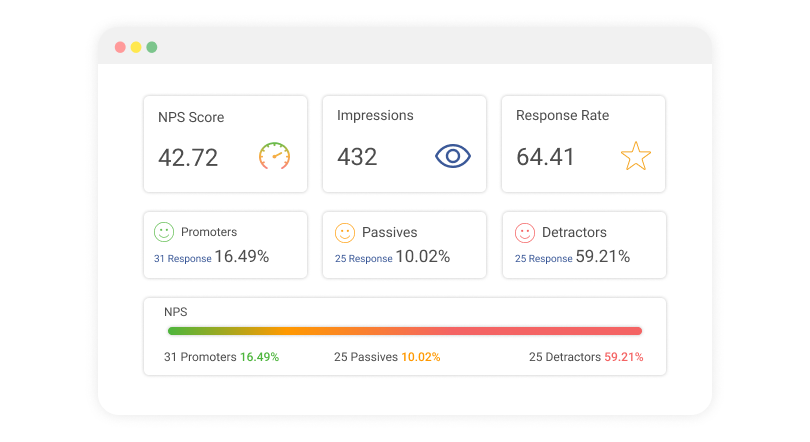
- Behavioral analysis tools employ eye-tracking, heatmap, or screen recording to help you understand user behavior and actions.
Try to break down the customer feedback into small chunks that your teams can quickly analyze and act upon.
Suggested Read: Product Strategy 101: How to Create One With Customer Feedback
Why Customer Product Feedback is Crucial for Your Business
Gathering product feedback at every stage is key to understanding customer needs. From concept to launch, this feedback helps ensure your product aligns with what your target market wants.
Here’s why it matters:
Identify the Right Product-Market Fit
“Product-market fit” occurs when your product’s value aligns with what your audience needs. It’s about creating the right product for the right people. Early on, your main focus should be achieving this fit because, without it, acquiring customers becomes a major challenge.
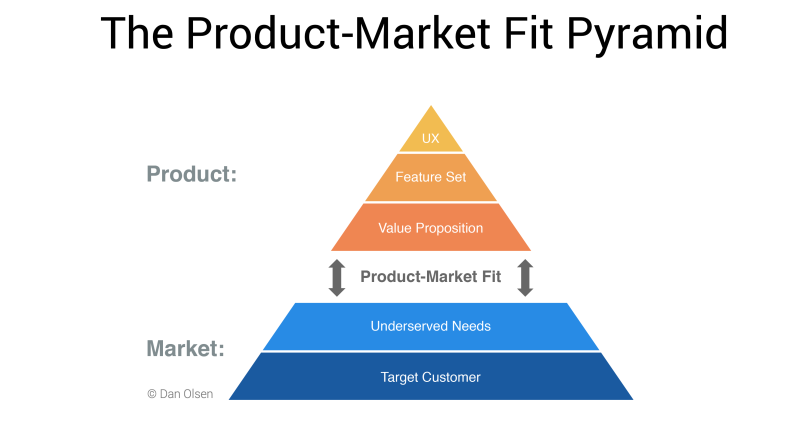
But how do you understand who your customers are and what they need?
By collecting regular feedback!
This helps you gauge demand and refine your value proposition based on direct input from your customers.
Several factors can influence product-market fit, including:
- Price
- Ease of use
- Quality
- Performance
With targeted insights, you can balance these elements to create a product that truly fits your market’s needs.
Case Study: How Netflix Achieved Its Product-Market Fit
Netflix has always found its perfect-market fit by studying the current and future trends. It started as a DVD rental business to provide cheaper options to the users than the brick & mortar shops.
It used to mail movie DVDs to the customers as part of its subscription package, allowing users to keep the DVDs with them for as long as they wanted without worrying about the late fees.
With the increase in internet bandwidth, Netflix shifted from DVDs to online streaming to compete as the cheapest alternative to whatever the entertainment market offered. By constantly altering their product over the years to fit the current market, Netflix is now one of the top streaming platforms in the world.

Test New Ideas & Product Concepts
It’s not just about building a product; it’s also about discovering what will benefit your customers next.
According to a study in Harvard Business Review, customer-ideated products performed 20% better.
That’s one more reason to crowdsource product ideas.
To create products that connect with potential customers, it’s crucial to understand them thoroughly. This is especially important for digital and SaaS products, which often cater to specific needs and target niche customer segments.
- What kind of solutions are your target looking for?
- Does the current product solve their problems in the most effective way?
- Does your current idea appeal to your target audience?
Another factor to consider is competition.
- Does a similar product exist in the market?
- Are there other options available that fulfill the same or similar purpose as your product?
- If yes, then what will set your product apart – the Unique Selling Proposition, the famous “USP”?
Feedback for products can help you explore answers to these questions and test new ideas at the pre-development stage so that you can make early changes before committing to building a prototype.
Case Study: How Udemy drives continuous product growth with user feedback
Udemy, an e-learning platform, uses Qualaroo’s contextual surveys to segment its audience based on various factors such as language and location. The survey responses help to understand issues and preferences for each segment to develop new ideas, product optimization, and product feedback strategies.
For example, using customer feedback, they identified that many users outside English-speaking countries were opting for courses taught in English. So, they added a new feature – automatic captioning in their course videos to make courses inclusive for more people worldwide.
They also use user research surveys to obtain information about traffic sources to understand the effectiveness of marketing efforts and optimize budget allocation.
Innovate
Incorporating customer feedback into your product cycle is necessary not only at the pre-development stage but also after launching the product.
It allows you to explore new ideas about making your product better. Sometimes even seasoned entrepreneurs feel a shortage of ideas that have a high probability of success.
During such slumps of creativity, customer feedback can spark innovation like nothing else.
Since the general people do not have to face the pressure of coming up with ideas, they can surprise product developers with their fresh perspectives.
The way forward for the product can be charted by taking advantage of their so-called ‘out-of-the-box’ ideation through one-to-one conversations. When the purpose of the product becomes clear, the rest of the product innovation and development process becomes quite streamlined.
How to Innovate by Using Feedback in R&D
With the increasing relevance of customer feedback, it has become essential to use the Voice of Customer in product R&D. You can eliminate most guesswork by incorporating customer feedback in the design stage itself. Plus, your theories and assumptions get validated.
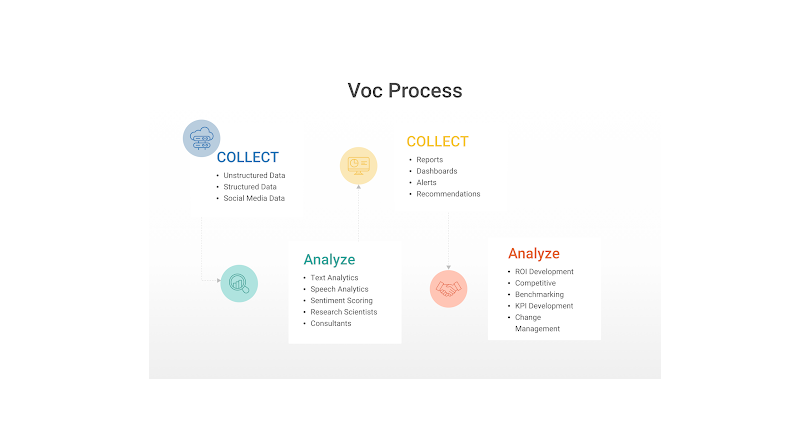
Some common ways to get customer feedback are:
- Interactive workshops
- Usability testing
- Social media monitoring
- Simple direct surveys that can be run inside your product or on-site.
Community feedback from long-time users is a great driver of new product development.
An excellent example of this strategy is the Lego Ideas portal, which allows the entire Lego community to submit their unique product ideas, participate in Lego-building contests, vote for the new ideas submitted by others, and interact with others in the world-ranging community.
Putting a customer feedback system in place lets you extract maximum insight from your target user’s mindset. It can also open up opportunities for target market expansion, customer acquisition, and new customer segments who are more than likely to love your end product.
4. Install a Continuous Delivery System
Often, product developers and marketers are too close to it to identify (or even acknowledge) its problems. To them, the flaws become invisible.
Customer feedback is a great tool to break this dangerous mindset. It identifies users’ problems that might not be readily apparent to those involved deeply in the product’s design, creation, or promotion.
With the constant changes in market trends and customer preferences, effective feedback systems allow businesses to adapt agile product development to respond to such changes quickly, thereby reducing risks.
Even at the prototype phase, new products should be tested by unbiased users. The fact that such users have no prior experience with the kind of product you are testing gives you insight into how well the product works (or doesn’t, and why), even when new customers choose to try it out for the first time.
Case Study: How KingsPoint Discovered a Problem to Save $60,000
KingsPoint implemented Qualaroo to collect and incorporate customer feedback in their conversion rate optimization process. The team deployed surveys on product pages, resource pages, and checkout pages.
The feedback data helped them uncover major javascript issues with the Safari browser that prevented the customers from completing their orders. The team immediately started to work on the fix to resolve the issue quickly.
This is what Steven Macdonald, advisor at KingsPoint, had to say about the impact of customer feedback on their product cycle – “Without Qualaroo, we would still be unaware of the problem. Based on conversion rates for both Firefox (12%) and Internet Explorer (9%), if we can convert just as many users with Safari, then fixing this problem could be worth approximately $60,000 this year.”
Other Benefits of Product Feedback
Product feedback can bring a lot of upsides to your organization. Once you start collecting data from product users, you can uncover insights critical to your business’s success.
Here are some more benefits of collecting product feedback:
A Better Understanding of Your Customers
Product feedback, positive or negative, lets you learn a lot about your customers. Everything from who your customers are, where they live, their preferences, and product experiences can be understood just by collecting product feedback.
There are plenty of ways you can gather this information, including:
- Online surveys
- Social media monitoring
- Web analytics
To understand your customers better, you can try this free product feedback template:
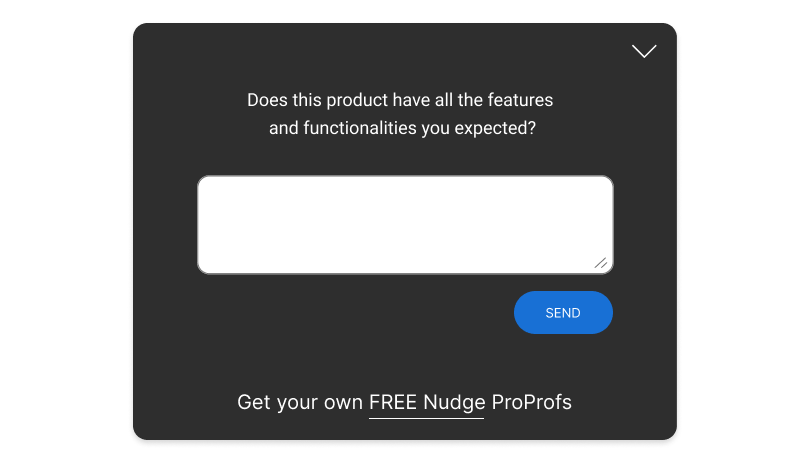
When you understand customers well enough and know what irritates and motivates them, you can use that to your advantage and drive conversions.
Improved Customer Satisfaction
Customer satisfaction is an important metric to keep track of because happy customers are likely to be loyal and generate more repeat business over time.
In fact, the data from Bain & Company suggests that satisfied customers make more purchases and act as promoters of the company.
To know how satisfied or dissatisfied your customers are with your products, you must follow up with them regularly.
And it’s pretty simple!
Just deploy a CSAT rating question using your online product feedback tool.
CSAT surveys integrated into your product can help you instantly check your customers’ pulse. You can also use the data to fix existing problems with your product and boost retention.
Boosted Loyalty
We already touched a tiny bit on customer loyalty in the previous point, but there’s more to it. Product feedback can tell you what works with your customer service experience and what’s preventing them from being loyal.
Loyalty is equally important as satisfaction, if not more, because loyal customers are more likely to make repeat purchases and are less likely to head toward the competition.
The Net Promoter Score survey works extremely well in gauging customer loyalty. Customers who are not loyal and unsatisfied would rate low on the scale.
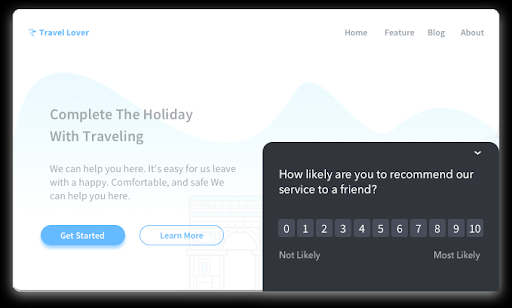
The scores will help you categorize customers into promoters, passives, and detractors. Then, you can work on gathering more information from your detractors, make improvements and turn them into promoters.
Informed Business Decisions
Every business decision you make should be based on solid facts and backed by data. Ideally, the data you collect from your customers through product feedback is extremely useful.
These insights tell you exactly what your customers want, and you can use these insights to lay down a product roadmap.
When you base your decisions on proven insights and data, you can easily make improvements and changes that will be useful for your customers and improve their overall product experience.
All you have to do is carefully analyze your feedback.
You can do it manually or use your online feedback tool’s built-in sentiment analysis engine, which is much faster and more accurate.
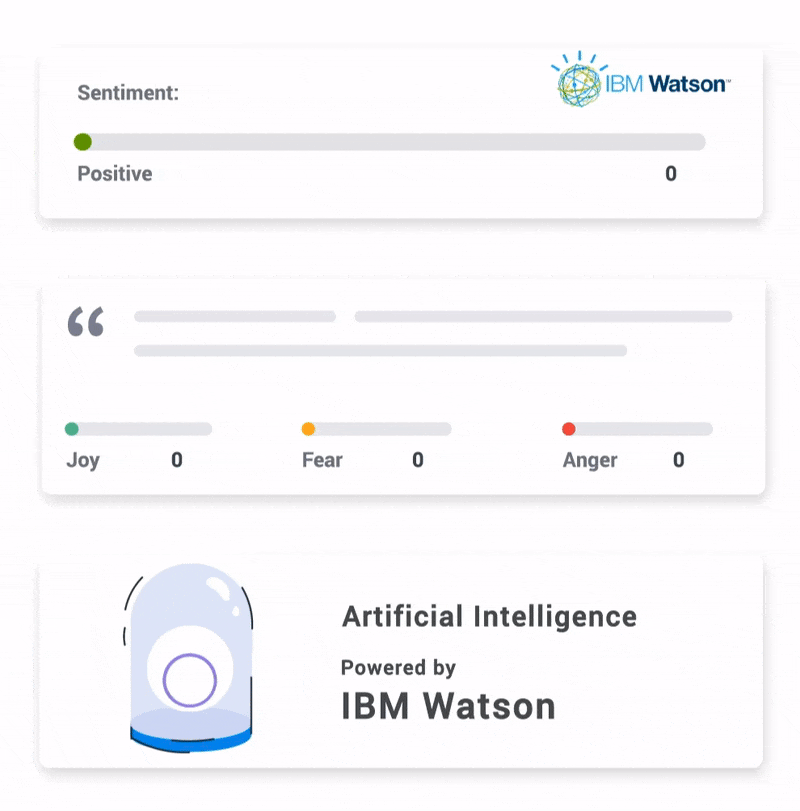
FREE. All Features. FOREVER!
Try our Forever FREE account with all premium features!
Examples of How Companies Use Feedback to Build Better Products
1. Apple
Apple has long prioritized gathering customer feedback on its products, even before it became a common practice. Whether it’s an in-store or online experience, Apple consistently reaches out to customers, seeking their input on products and services.
It also has an official support account on Twitter, which proactively collects suggestions, complaints, and customer feedback. CSAT and NPS surveys constitute a significant part of Apple’s product feedback program to measure customer satisfaction with the products.

This feedback is directly incorporated into the product cycle to drive innovation and explore new ideas for improving the products.
It’s no wonder that Apple has consistently scored one of the highest customer satisfaction ratings in the market – The fact evident in the 97% approval ratings for their Apple Watch among customers.
2. Twilio
Cloud communications platform Twilio’s product development strategy involves putting itself in the customers’ shoes at every stage of the product cycle to work on their issues.
As they work in a fast-moving and constantly changing environment, testing every hypothesis and idea is impossible. So, the company uses customer insights from survey feedback to prioritize which hypotheses to pass for the experimentation process.
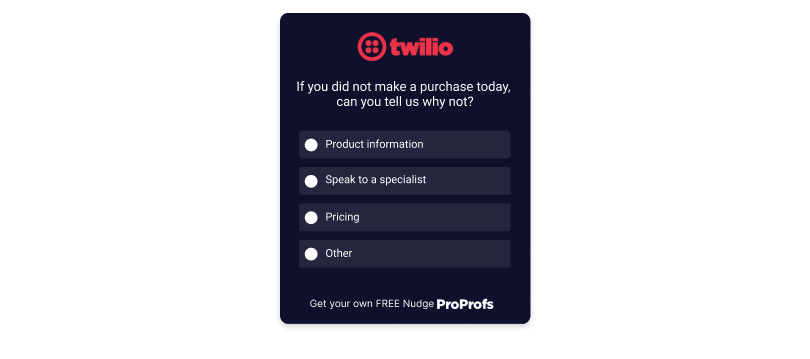
Using Qualaroo survey Nudges™, they collect targeted customer feedback to build data-backed hypotheses, making the process more efficient and increasing the chance of positive results.
The customer feedback is used not only by the product teams but across the entire organization – 18 different teams use survey data to build new ideas and test them.
Here are some ways Twilio empowers its teams with customer feedback:
- They use surveys to screen and recruit participants for user testing and interviews.
- Map customer needs and expectations to spark new ideas and innovation.
- Collect data and collaborate among different teams to understand the difference between customer expectations.
With a constant feedback loop in place, Twilio can innovate, experiment, and deliver new functionality almost every week.
3. Mozilla
In 2018, Mozilla decided to branch out from the Firefox browser to include more apps and services. At the same time, it decided to rebrand its identity and designed two design systems to bring the whole suite of tools under one banner.
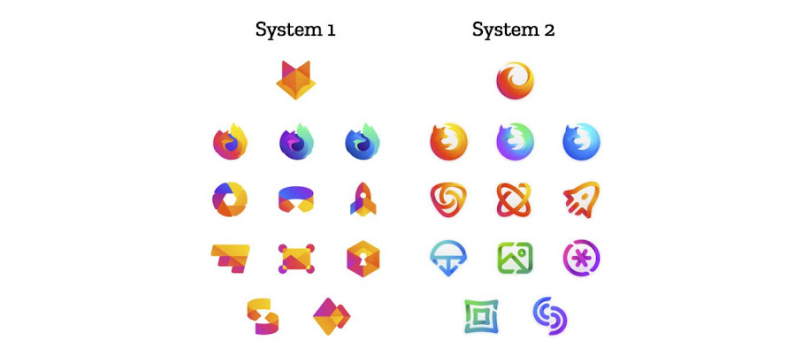
What set this process apart was Mozilla’s choice to involve its users in selecting the new design system. They invited everyone to provide feedback, offering their thoughts on the designs and suggesting changes by responding to the following questions:
- Do these two systems still feel like Firefox?
- How visually cohesive is each of them? Does each hold together?
- Can the design logic of these systems stretch to embrace new products in the future?
- Do these systems reinforce the speed, safety, reliability, wit, and innovation that Firefox stands for?
- Do these systems suggest our position as a tech company that puts people over profit?
The entire campaign did two things:
- It made customers a part of the development and redesign process, earning Mozilla loyal users.
- It helped Mozilla grow. By the time the new design came out, people were already familiar with design icons, preventing any confusion.
Listen Better, Build Better
Product feedback is an invaluable asset in the product development cycle, offering insights that drive innovation and customer satisfaction.
By understanding its importance, benefits, and types and employing strategic methods for collection, businesses can craft questions that resonate at every product stage.
Adhering to best practices and learning from real-world examples, companies can seamlessly integrate customer feedback and ensure their products meet and exceed market expectations.
Remember, the key to sustained success lies in continuously listening, adapting, and evolving by creating a product feedback loop.
You can get started by choosing an online survey tool that allows you to ask customers questions in the most non-intrusive way and get real-time product insights.
Frequently Asked Questions
What are the best methods for collecting feedback?
There are several methods to collect feedback, including in-app surveys, website pop-ups, customer interviews, focus groups, usability testing, social media monitoring, and analyzing support interactions. Each method offers unique insights, helping you understand user experiences and identify areas for improvement.
How do I manage product feedback?
Managing product feedback involves collecting, organizing, and prioritizing user input. Use tools like feedback software to gather and categorize feedback. Analyze the data to identify common themes and prioritize actions based on impact and feasibility. Implement changes, communicate updates to users, and continually monitor feedback for ongoing product improvement. Read our guide on managing customer feedback to know more.
How do I conduct a product feedback session?
To conduct a product feedback session, start by defining clear objectives and selecting the right participants. Create a comfortable environment, whether it's a focus group or an individual interview. Use open-ended questions to encourage detailed responses. Listen actively, take notes, and avoid leading questions. After the session, analyze the feedback to extract actionable insights.
How do I get feedback on a product idea?
To gather feedback on a product idea, start by creating a prototype and sharing it with potential users through surveys, interviews, and focus groups. Use contextual feedback tools like in-app surveys or website pop-ups to capture insights during user interactions. Ask specific questions to identify their needs and concerns. This approach allows you to refine your idea, ensuring it meets user expectations before development.
FREE. All Features. FOREVER!
Try our Forever FREE account with all premium features!

 We'd love your feedback!
We'd love your feedback! Thanks for your feedback!
Thanks for your feedback!




